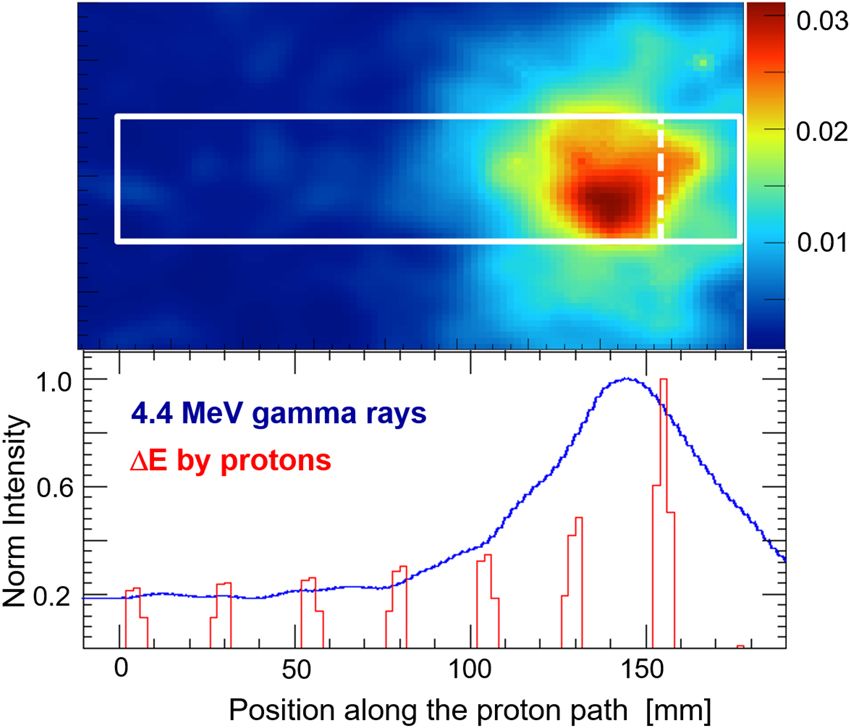3D position sensitive Compton camera succeeds in high-precision imaging of 4.4 MeV gamma rays
Tue, Jun 5, 2018-
Tags
Researchers at Waseda University and the National Institutes for Quantum and Radiological Science and Technology (QST) created a novel 3D position sensitive Compton camera (3D-PSCC), which enables high-precision gamma-ray imaging of the 1-10 MeV range. This camera could be applied to advance cancer treatment and probe nucleosynthesis in the universe in the future.

(Above:) The first experimental image of the 4.4 MeV prompt gamma rays reconstructed from the 3D-PSCC measurement. (Lower:) 1-D projection along the proton path (shown in blue) of the 4.4 MeV gamma-ray image presented above, and a comparison of the energy deposited by protons (red histogram) obtained from the PHITS simulation.
Gamma rays behave more like particles, and their wavelength size is as small as the sizes of electrons and atomic nuclei. Though techniques to image gamma rays in the 1-10 MeV had been sought for, they were far from being established due to the gamma rays’ penetration strength and complex reaction. For instance, in the field of medicine, there has been much focus on proton therapy, which could completely cure cancer without having to undergo surgery, but externally visualizing dose distribution during radiation exposure has been difficult. If proton beans could react with a flow tracer tagged with a radionuclide to visualize emitted gamma rays, improving treatment accuracy would be possible. Moreover, because gamma rays in the 1-10 MeV range are produced by various excited atomic nucleus (of such as carbon and oxygen), they are expected to play a key role in unveiling stellar and universal nucleosynthesis.
The research team succeeded in high-precision imaging of prompted radiation of 4.4 MeV which occurs during proton therapy. The generated distribution of gamma rays was almost exactly overlapping the energy loss of proton beams, proving for the first time in the world its usefulness as an online monitor during treatment. The results of this research will not only contribute to advancing proton therapy, but it could open new windows to the study of space science. Because this was a prototype camera, the team hopes to make improvements in quality and build device for practical use.
This study, led by Professor Jun Kataoka, was published online in Scientific Reports on May 25, 2018.
Reference
- Title: Precision imaging of 4.4 MeV gamma rays using a 3-D position sensitive Compton camera
- Published in Scientific Reports on May 25, 2018
- Authors: Ayako Koide, Jun Kataoka, Takamitsu Masuda, Saku Mochizuki, Takanori Taya, Koki Sueoka, Leo Tagawa, Kazuya Fujieda, Takuya Maruhashi, Takuya Kurihara, Taku Inaniwa













